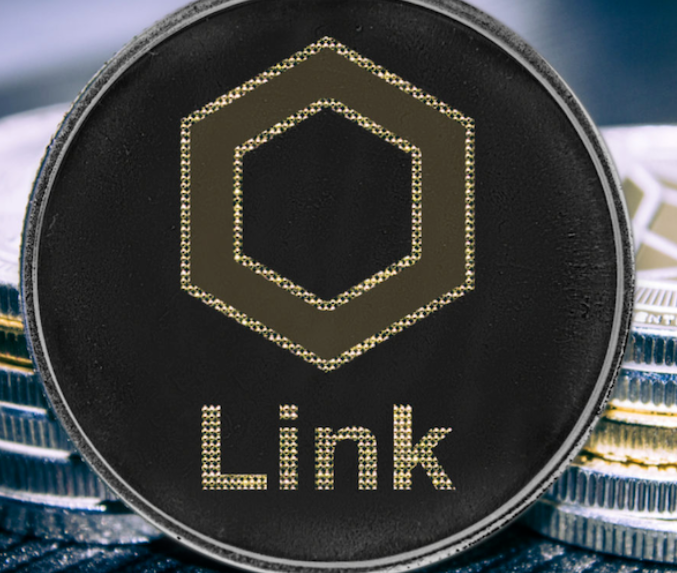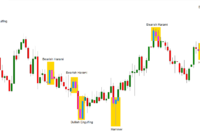bbc.towzdog.com What is Chainlink Crypto? A Comprehensive Guide In the ever-evolving world of cryptocurrencies and blockchain technology, Chainlink has emerged as a significant player, addressing a critical challenge: the connection between smart contracts and real-world data. This article explores the fundamentals of Chainlink, its architecture, use cases, and the current market landscape, providing a clear understanding of why Chainlink is considered a cornerstone of decentralized finance (DeFi) and beyond.
Introduction to Chainlink
Chainlink is a decentralized oracle network that allows smart contracts on various blockchains to securely interact with external data sources, APIs, and payment systems. Founded in 2017 by Sergey Nazarov and Steve Ellis, Chainlink aims to bridge the gap between blockchain technology and the real world, enabling a wide range of decentralized applications.
What is an Oracle?
In the context of blockchain, an oracle is a third-party service that provides smart contracts with external data. Smart contracts on their own cannot access information outside their blockchain environment. This limitation can hinder the functionality of dApps (decentralized applications). Chainlink solves this problem by acting as a reliable oracle that fetches real-world data for these contracts, enhancing their capabilities.
The Architecture of Chainlink
1. Chainlink Nodes
Chainlink nodes are the backbone of the network. They are operated by independent entities that fetch and verify data from multiple sources. When a smart contract requests data, Chainlink nodes gather this information and deliver it back to the contract. This decentralized approach ensures reliability and reduces the risk of single points of failure.
2. Decentralized Data Sources
Chainlink connects to various data sources, including APIs, web servers, and other blockchains. By aggregating data from multiple providers, Chainlink increases the accuracy and reliability of the information it supplies to smart contracts. This redundancy is crucial for maintaining trust in the network.
3. Aggregation Contract
Once the data is collected from various nodes, it is aggregated through an aggregation contract. This contract evaluates the data’s accuracy and selects the most reliable information to deliver to the smart contract that made the request. This ensures that the data used is not only accurate but also reflects consensus among the nodes.
4. LINK Token
The native cryptocurrency of Chainlink is LINK. It is used to pay node operators for their services and to incentivize them to provide accurate data. LINK tokens can also be staked to participate in the network’s governance and security mechanisms. This dual functionality helps maintain the network’s integrity while rewarding participants.
Current Market Data
As of November 2024, Chainlink’s market data reflects its importance in the cryptocurrency landscape:
- Market Capitalization: Approximately $5 billion
- Current Price: Around $7.50 per LINK token
- Circulating Supply: Approximately 1 billion LINK tokens
- Total Supply: 1 billion LINK tokens
Chainlink continues to grow in adoption, with thousands of integrations across various blockchain networks and dApps.
Use Cases of Chainlink
1. Decentralized Finance (DeFi)
Chainlink is pivotal in the DeFi ecosystem, providing reliable price feeds for various platforms. By delivering accurate and timely data on asset prices, Chainlink enables secure trading, lending, and borrowing on decentralized exchanges.
2. Insurance
In the insurance industry, Chainlink can automate claims processing by providing data on external events. For instance, in crop insurance, if a specified weather condition occurs, the smart contract can automatically trigger payouts to policyholders without manual intervention.
3. Gaming
Blockchain-based games can utilize Chainlink to incorporate real-world data into gameplay. For example, a game could use Chainlink oracles to access real-time data, such as sports scores or market prices, enhancing user experience and engagement.
4. Supply Chain Management
Chainlink can facilitate transparency in supply chain processes by connecting smart contracts with data from IoT devices. This allows stakeholders to track products in real time, ensuring authenticity and compliance throughout the supply chain.
5. NFTs and Digital Assets
Chainlink supports the NFT ecosystem by providing verifiable metadata for digital assets. This ensures that buyers and sellers can trust the authenticity and value of NFTs, making the marketplace more reliable.
The Advantages of Chainlink
1. Decentralization
One of Chainlink’s most significant advantages is its decentralized nature. By using multiple nodes and data sources, Chainlink minimizes the risks associated with single points of failure and data manipulation.
2. Interoperability
Chainlink is blockchain agnostic, meaning it can work with various blockchain platforms. This interoperability allows developers to leverage Chainlink’s capabilities across different ecosystems, increasing its utility and adoption.
3. Security and Reliability
With its robust architecture and decentralized data sourcing, Chainlink ensures that the data provided to smart contracts is both secure and reliable. This trust is essential for the broader adoption of blockchain technology in various industries.
Challenges Facing Chainlink
1. Competition
While Chainlink is a leader in the oracle space, it faces competition from other oracle solutions like Band Protocol and API3. These competitors aim to offer similar services, which could impact Chainlink’s market share.
2. Scalability
As the demand for decentralized applications grows, Chainlink must continue to scale its network effectively. Ensuring that it can handle increased data requests without sacrificing speed or reliability is crucial for its ongoing success.
3. Regulatory Concerns
The broader cryptocurrency market faces regulatory scrutiny, which could impact Chainlink and its operations. Compliance with local regulations will be essential for Chainlink’s future growth and adoption.
Conclusion
In conclusion, Chainlink stands out as a vital component of the blockchain ecosystem, providing essential data services that enable smart contracts to interact with the real world. Its decentralized architecture, broad range of use cases, and strong market position make it a key player in the ongoing evolution of decentralized finance and other applications.
As Chainlink continues to innovate and adapt to the growing demands of the blockchain space, it remains a project worth watching for investors, developers, and users alike.
For more information on Chainlink and its developments, you can visit CoinDesk for the latest updates and insights.
Final Thoughts
Understanding Chainlink and its role in the cryptocurrency ecosystem is crucial for anyone looking to navigate the complexities of blockchain technology. With its focus on reliability, decentralization, and real-world applicability, Chainlink is poised to remain at the forefront of the blockchain revolution.




